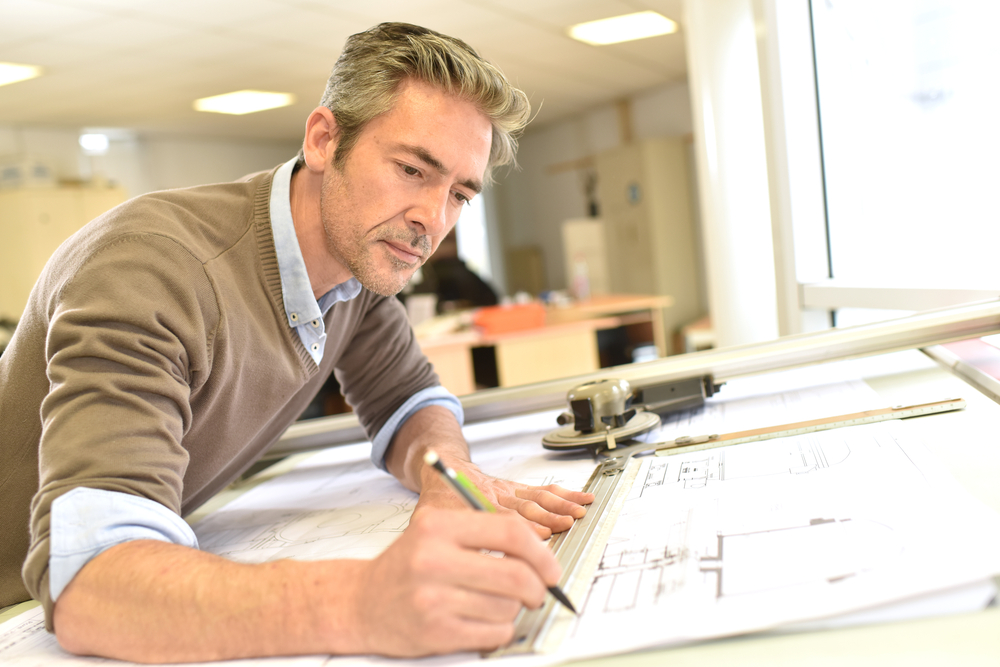Architect Hiring Guide for Homeowners and Developers
Architect Hiring Guide for Homeowners and Developers
Blog Article
Recognizing the Diverse Profession Paths Available for Aspiring Architect
As an aspiring Architect, you have a world of occupation courses waiting for you. Whether you're drawn to conventional architecture or the nuances of sustainable style, there's a particular niche that aligns with your passions.
Traditional Architecture: Designing Frameworks and structures
Traditional design focuses on creating structures and frameworks that mix capability with visual allure. Your designs can mirror social heritage, showcasing regional practices while fulfilling contemporary needs.
You'll develop skills in preparing, model-making, and website analysis, allowing you to picture and interact your ideas successfully. Involving with customers, you'll require to comprehend their vision and convert it right into viable designs.
Moreover, developing codes and sustainability techniques are vital in your job, ensuring your frameworks are ecologically friendly and secure. As you grow in your career, you'll find possibilities in domestic, commercial, and even remediation tasks, each offering special difficulties. Embracing conventional architecture leads the way for a satisfying occupation that admires the past while forming the future.
Urban Preparation: Forming Neighborhoods and Public Spaces
As an ambitious Architect, you can play a crucial duty as an urban coordinator, transforming just how areas work and engage. By utilizing community interaction techniques, you'll ensure that residents have a voice in forming their atmosphere. Plus, integrating sustainable style concepts will certainly help produce areas that not just satisfy today's needs but likewise safeguard the future.
Function of Urban Planners
While numerous might think about designers as the single enthusiasts behind buildings, metropolitan planners play a crucial role fit the broader landscape of communities and public rooms. They analyze land use, zoning laws, and area requires to produce sustainable atmospheres that boost lifestyle. By teaming up with different stakeholders, you'll aid develop parks, transportation systems, and property locations that promote social interaction and availability. Urban organizers likewise focus on ecological considerations, making sure that developments incorporate eco-friendly spaces and assistance biodiversity. Your experience in spatial layout and community characteristics enables you to envision future growth while protecting social heritage. In this critical function, you'll directly influence just how people experience their environments, making every project a chance for positive change.
Neighborhood Interaction Techniques
Effective community involvement methods are essential for urban planners to guarantee that the voices of residents are listened to and valued in the planning procedure. To cultivate purposeful discussion, you must prioritize open discussion forums and workshops where community members can reveal their ideas and worries. By proactively listening and incorporating feedback, you'll produce rooms that show the area's needs, inevitably leading to even more effective and sustainable metropolitan atmospheres.
Lasting Style Principles
When designing city spaces, integrating sustainable layout principles is crucial for developing atmospheres that grow both ecologically and socially. Take into consideration incorporating eco-friendly areas, like gardens and parks, to boost biodiversity and enhance air high quality.
Creating with water conservation in mind is likewise vital-- think of rain yards and absorptive surfaces to handle stormwater. Entailing neighborhood members during the planning process warranties that the areas you create fulfill their needs and urge social communication. By welcoming these principles, you'll add to dynamic, lasting city landscapes that benefit everybody.

Landscape Architecture: Developing Lasting Exterior Settings
As you discover landscape architecture, you'll discover essential layout concepts that produce functional and beautiful outdoor areas. Lasting methods play a vital function in guaranteeing these atmospheres grow while lessening environmental effect. And also, you'll discover a selection of career chances that enable you to make a genuine distinction in just how individuals engage with nature.
Layout Principles in Landscape
Understanding design principles in landscape design is important for producing sustainable outdoor environments that harmonize with nature. You'll need to contemplate elements like equilibrium, range, and proportion to assure your styles feel cohesive and welcoming. Furthermore, pay interest to seasonal modifications, developing with materials that enhance the environments year-round.
Sustainable Practices Overview
Lasting methods in landscape design not only concentrate on looks but likewise prioritize eco-friendly health and wellness and source preservation. You can make areas that promote dirt wellness, such as practicing and utilizing organic materials permaculture principles. Ultimately, these methods assure your layouts profit both individuals and the environment for years to come.
Job Opportunities Exploration
With a strong structure in sustainable techniques, landscape architecture supplies a range of profession courses that enable you to make a meaningful influence on the atmosphere. Urban planners usually work together with landscape architects to produce green areas in metropolitan setups, enhancing city livability. If you're enthusiastic regarding education and learning, think about becoming a landscape style educator, inspiring future generations.
Sustainable Style: Concentrating on Eco-Friendly Practices
As you explore your job in design, click for info accepting environment-friendly practices can set you apart in an affordable field. Lasting design concentrates on producing structures that lessen ecological effect while improving owner wellness. By integrating sustainable materials, energy-efficient systems, and lasting structure methods, you'll add to a greener future.
Beginning by getting knowledge of eco-friendly qualifications like LEED or BREEAM, which can reinforce your credentials. Consider exactly how all-natural light, ventilation, and thermal performance can maximize layout. Team up with engineers and environmental specialists to introduce options that reduce waste and conserve Architect resources.
Do not neglect the relevance of community involvement-- appealing neighborhood stakeholders can motivate layouts that integrate with the setting. As clients significantly focus on sustainability, your competence in green techniques will certainly not just attract projects but also fulfill your passion for liable style. Welcome this crucial facet of the career, and see your job prosper.
Historical Conservation: Securing and Bring Back Social Heritage
While you start on your building journey, consider the important role of historic preservation in maintaining our social heritage. This area concentrates on the security and reconstruction of substantial structures, sites, and structures that inform the tales of our past. By taking part in historic conservation, you'll assist protect the architectural heritage that shapes area identification.
As a historic preservation Architect, you'll analyze historic importance and assess the problem of structures. You'll work very closely with historians and conservationists to guarantee genuine remediation strategies are employed. This job path allows you to mix imagination with study, enabling you to make services that appreciate original materials and workmanship.
Your work not only adds to sustainability by reusing existing structures but likewise cultivates a sense of pride within areas. Welcoming this path will aid you become a guardian of history, protecting the stories and aesthetic appeals that improve our lives.
Interior Architecture: Enhancing Indoor Spaces
Historical conservation and interior style both share a commitment to enhancing the developed setting, yet they concentrate on various aspects. While historic preservation highlights keeping a framework's historic and cultural value, indoor style absolutely nos in on enhancing indoor spaces for functionality and appearances.
As an ambitious Architect, you'll locate that indoor style permits you to mix creative thinking with technological skills. You'll make rooms that not only look great however likewise advertise convenience and effectiveness. This area includes recognizing just how light, shade, and products engage within a space, impacting state of mind and use.
You'll service numerous tasks, from domestic homes to industrial offices, guaranteeing that each environment meets the demands of its passengers. By focusing on individual experience, you navigate to these guys can transform interiors right into useful and motivating areas, making a substantial influence on exactly how people engage with their environments. Accept the opportunity to boost interior settings and shape the means individuals live and work.
Industrial Layout: Merging Performance With Aesthetic Appeals
Industrial layout plays an essential duty in producing products that seamlessly mix looks with performance, guaranteeing that what you use daily is not just visually enticing however also functional. As a hopeful Architect, you might immerse on your own in this field, concentrating on developing everything from furniture to consumer electronics. Your job includes recognizing individual needs, products, and manufacturing processes, permitting you to produce ingenious services that boost everyday experiences.
In commercial layout, you'll often collaborate with marketing professionals, designers, and makers, guaranteeing that your layouts are not only stunning however likewise viable. This job course provides a dynamic setting where creative thinking satisfies practicality, making it a rewarding selection for designers interested in shaping the items of tomorrow.
Often Asked Inquiries
What Educational Certifications Do I Required to Become an Engineer?
To end up being an architect, you'll require a professional level in design, generally a Bachelor's or Master's. In addition, you'll need to complete an internship and pass the Architect Enrollment Examination to exercise legally.
Exist Accreditation Needs for Different Building Profession Paths?
Yes, there're qualification demands for various architectural courses. Architect. You'll need to pass tests, complete teaching fellowships, and sometimes pursue specialized training, relying on your chosen focus, like landscape style, urban style, or historical preservation
What Software Program Skills Are Necessary for Architects Today?

Exactly How Can I Gain Practical Experience While Studying Design?
You can gain sensible experience by interning at architectural companies, joining layout competitions, offering for area jobs, or collaborating with schoolmates on real-world assignments. These chances boost your skills and develop important links in the industry.
What Task Opportunities Exist Outdoors Conventional Style Firms?
You can explore numerous task possibilities outside traditional design companies, like metropolitan preparation, interior decoration, landscape style, construction administration, realty development, or even duties in sustainability consulting. Each offers special obstacles and rewards.
Whether you're drawn to standard design or the subtleties of sustainable design, there's a particular niche that aligns with your interests.When creating metropolitan spaces, including sustainable design principles is vital for producing environments that flourish both ecologically and socially.As you check out landscape design, you'll find crucial layout concepts that develop gorgeous and practical outside areas.Recognizing layout concepts in landscape style is crucial for developing lasting outside atmospheres that balance with nature.In industrial style, you'll typically work together with online marketers, engineers, and manufacturers, ensuring that your designs are not just lovely however also possible.
Report this page